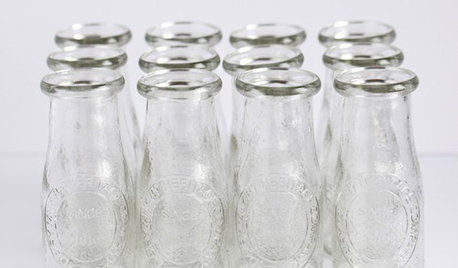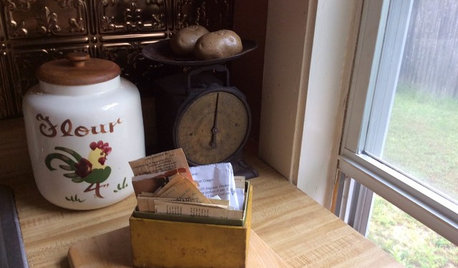cooking with other milks...
vacuumfreak
13 years ago
Related Stories

KITCHEN DESIGNA Cook’s 6 Tips for Buying Kitchen Appliances
An avid home chef answers tricky questions about choosing the right oven, stovetop, vent hood and more
Full Story
PRODUCT PICKSGuest Picks: Fresh Milk
Creamy white shades, milk bottle shapes and other dairycentric designs can refresh your decor
Full Story0

PAINTINGWhat to Know About Milk Paint and Chalk Paint — and How to Use Them
Learn the pros, cons, cost and more for these two easy-to-use paints that are great for giving furniture a vintage look
Full Story
ACCESSORIESAccessories 101: A Splash of Milk Glass
A fanciful group of these vintage collectibles creates timeless style just about anywhere
Full Story
PRODUCT PICKSGuest Picks: Sweet Supplies for a Milk and Cookies Party
Watch guests' eyes light up when you set a table with yummy treats and pretty accessories
Full Story
DECORATING GUIDESNew Classics: The Sara Milk Glass Chandelier
Exotic and familiar at once, this light fixture makes a memorable impression wherever you hang it
Full Story
KITCHEN DESIGNHouzz Call: What’s Cooking in Your Kitchen?
Most of us turn to recipes, videos and culinary shows when we cook. Where do you set your cookbook, tablet or TV screen?
Full Story
KITCHEN DESIGNNot a Big Cook? These Fun Kitchen Ideas Are for You
Would you rather sip wine and read than cook every night? Consider these kitchen amenities
Full Story
KITCHEN DESIGN5 Home Cooks Share Their Favorite Family Recipes
Peek inside the kitchens of these Houzz users and learn how to cook their time-tested, passed-down dishes
Full Story




dgkritch
vacuumfreakOriginal Author
Related Discussions
Potatoes cooked in milk/cream for mashed potatoes?
Q
LOOKING for: Replacement for cooked condensed milk
Q
Black-Eyed Peas vs. Tepary or any other Bean Cook em Green Question.
Q
Hobby and other cooks...
Q
grainlady_ks
lyfia
Chi
Lars
susytwo
grainlady_ks
vacuumfreakOriginal Author